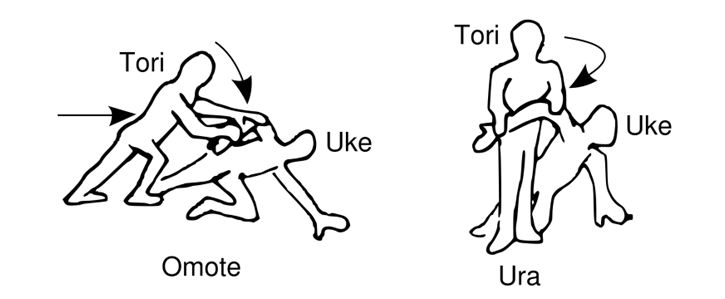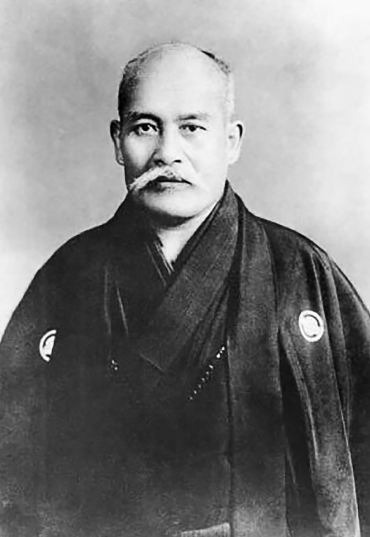Martial arts can be defined as a set of techniques and codified systems which are used in combat against the enemy or attacker. It is a term derived from the Latin language which stands for “art of Mars”. These sets of techniques are used for different purposes which include self-defense, law enforcement application, competition, and even the development of spiritual values of ones’ self. There are different types of techniques in Martial arts such as Judo, Taekwondo, Mixed Martial Arts, Kickboxing, Aikido, and others as well.
What is Aikido?
Of all the popular ways of Martial Arts, Aikido is unique because it restricts the ability of a person to injure his enemy but also allows him to completely defend himself. Therefore, it is considered as a more of a non-violent approach towards Martial Arts that is usually causing the least harm to the attacker and the defender. It is considered to be the way of peace rather than the way of aggression. The purpose of Aikido is to turn down the fight and close it down rather than fight and aggravate the issue. Aikido is based on religious values and spirituality as well.
About Master Morihei Ueshiba
The founder of this technique for self-defense was MoriheiUeshiba who said that this technique is the way of unifying with life energy in its true and positive manner. He always referred to the phrase “true victory, final victory over oneself, here and now” so as to explain Aikido to his students. The system of self-defense with Aikido is so light that it does not focus on breaking any bone at all. Rather it is just based on the key elements of throwing, joint locking, striking, and pinning.
Master Ueshiba always said that the ideal warrior is not the killing machine rather he is the one who is having a positive character to avert a fight and display his integrity by putting down a fight.
Basics of Aikido
Since Aikido is a unique way of martial arts and a differentiated technique for defense, it has unique foundations as well. Primarily, there are five basics which create the foundation of Aikido. “Irimi” means to directly enter into the technique while not indulging in any other indirect acts or conversation. This means that Aikido is focused on sticking to the point as much as it is necessary only. “Atemi” is a principle which is the most important building block. It says that there must not be any kind of twisting or breaking of bones or any major bruises anywhere on the body. The techniques to be used include striking, joint-locking, and throwing but not aggressively fighting at any point.
In addition to that, the concept of “Kokyu-ho” is also important which relates to having self-control especially on the breathing and maintaining the right respiration so as to not get down so easily. “Sankaku-ho” is the concept of triangular attack which means that the angle of attack can only be in the form of three dimensions. The last principle of Aikido is “Tenkan” which means changing the momentum of the opponent so that he is unable to attack in the desired manner. The concept of throwing mainly revolves around the system of “Bokken, tanto, and Jo”.
Learning Aikido with Spirituality
One of the most useful tips to learn Aikido is to learn it with spirituality. Master Ueshiba always said that the approach of Aikido is just as much as being harmonious to the spirit itself. The basic step is to improve oneself in terms of personality, character, and behavior. The spirit must submit itself towards positivity. Anyone who aims to learn Aikido needs to have a humble attitude at first and aim to bring peace rather than aiming to overpower by fighting.
Studying “Ki”
An important tip towards learning Aikido is to study and understand the concept of “Ki” at first before moving on towards the training aspect. It refers to physical and mental training simultaneously through the concept of Life Energy. Realizing one’s full potential is possible by a self-examination of the Life energy that one possesses. Master GozoShioda considered it as one of the hard ways of learning Aikido as it involved a complete commitment of the mind as well as the body. This principle is based on a range of different aspects such as “ambience”, “mind”, “mood”, and “intention” as well.
Attain Fitness
There are various different types of training that are involved in Aikido among which Fitness training is one of the most important one. To learn Aikido in its desired manner, attaining fitness by the opening up of all muscles as well as having a proper cardiovascular element within the body is necessary. Teachers of Aikido have suggested that the students work out on their tone, muscle, and power along with stamina. This is because fully functional muscles are going to be useful towards a coordinated approach of whole-body movement and balance similar to yoga. Many dojos which have students for Aikido start with a full body stretching exercise to warm up the muscles.
Weapon Training
Even though Aikido is a completely non-violent approach towards self-defense, weapon training is a fundamental of Aikido and would help in a better learning of the entire technique. Wooden Sword may be used which is known as the “bokken” or the knife can be used known as “tanto”. Weapon training provides important aspects of distance, timing, foot movement, preciseness, and staying connected to the attacker.
The use of weapons is mainly for the purpose of disarming the attacker or taking the weapon. However, in some cases, it is also used to have a mild attack or hit which does not injure the attacker in any way whatsoever. The founder developed many of the empty-handed techniques from traditional sword, spear, and bayonet movements
Iwama Style
It is known that the Iwama Style of Aikido is an important one for learning the art. It was also one of the ways taught by Master Ueshiba. The basic way in which Iwama style becomes quite helpful for the students is that it focuses on a traditional approach. The Iwama style focuses on having basic weapons or an empty hand angle of attack. Students of Aikido consider it to be the most suitable approach for Aikido as it has been among the few important ones preserved since the time of Master Ueshiba.
Mental Training
An important tip to learn Aikido is to have yourself mentally trained along with having all kinds of physical fitness. The ability to have full mental control over the body is essential. The main idea is to “enter-and-blend” into the different types of movements that underlie Aikido techniques. According to the idea by Master Ueshiba, in order to learn Aikido, one must be mentally prepared and willing to have faced the 99% of the opponent’s attack and have the stare to death. Mental training is important as it would help to execute techniques without hesitation.
Rules of Uke and Tori
Aikido Training is also based on two patterns one of which is receiver of this technique who is “uke” while the other one is “tori ” He who applies a throwing technique is referred to as “nage”. Uke and Tori are important as they are the basis of give and take for Aikido. Tori is learning regarding the attack control while uke must be calm in his approach because he is receiving the attack. If he gets violent, the concept of Aikido will diminish. To counter such attacks with a “tori”, a “uke” can use a series of reversal attacks and off-balance techniques so as to regain balance as well as minimize the risk of injury to oneself as well.
Conclusion
Aikido Training is spiritually and morally one of the best forms of training for the fact that it is based on peace, harmony, and love. The different types of tips for learning Aikido are also based on maintaining inner peace and not getting violent at any time. Self-defense is necessary but with the great teachings of Master Ueshiba, it is evident that hurting or purposeful injuring of the opponent is not necessary as the primary purpose is to let down the fight and not the fighter. Many students of Master Ueshiba still promoted his teachings and worked even after his death for the betterment of society.




